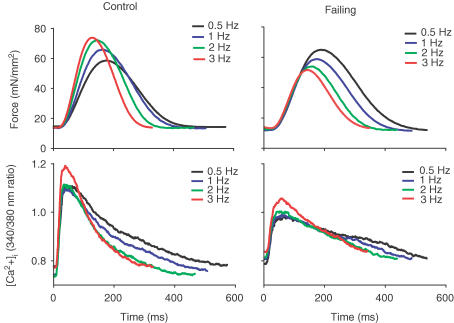Figure 1. Averaged force twitches (upper panels, n= 10) and [Ca2+]i transients (lower panels) at different stimulation frequencies from control (left panels) and failing (right panels) right ventricular trabeculae.
In the control group a positive force–frequency relation with increased frequency-dependent acceleration of relaxation (of force and Ca2+ transient) exists, while in the failing group a negative force–frequency relation with a preserved frequency-dependent acceleration of relaxation was observed.

